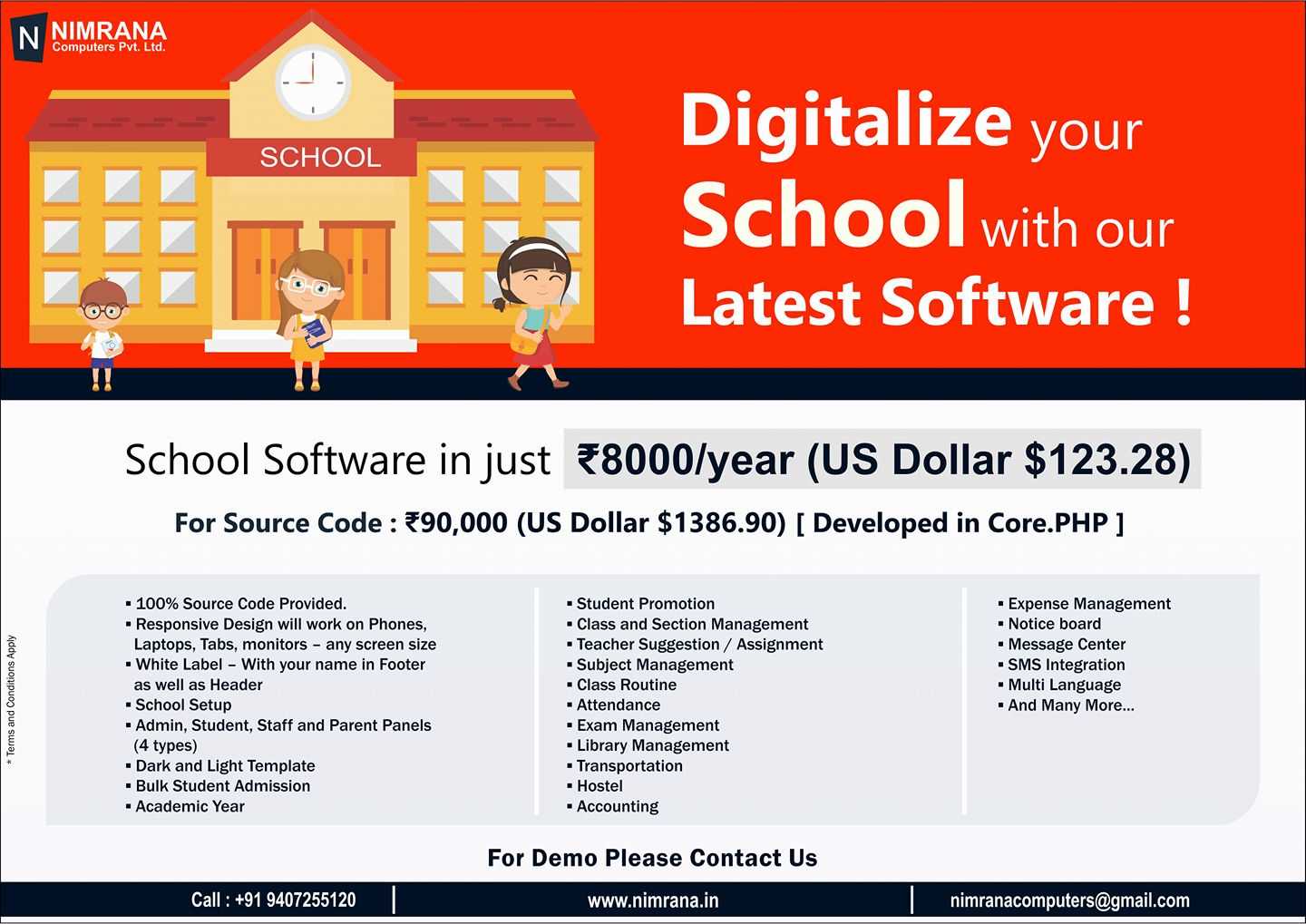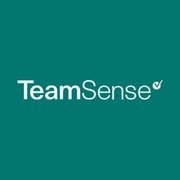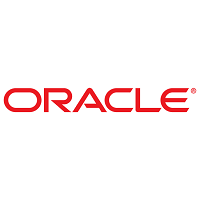What Is Absence Management Software?
Businesses of all sizes can benefit from Absence Management Software since it makes it easier to track and manage staff absences. From the first request to the last approval, this kind of software expedites the entire absence process, making it a crucial tool for managers and HR departments alike. Fundamentally, Absence Management Software centralizes and automates the processing of employee absences, including requests for vacation time, sick days, and other time off.
It makes tracking and monitoring worker availability easier by offering a thorough picture of employee absence information. This makes it possible for managers to efficiently plan and distribute resources, guaranteeing business continuity and reducing the disturbance brought on by unforeseen absences. The capacity of absence management software to handle absence requests and approvals digitally, doing away with paper-based procedures and lowering the possibility of mistakes or delayed responses, is one of its primary characteristics.
Managers can swiftly assess and approve or reject absence requests made by staff members using this software's user-friendly interface. Employees and their managers collaborate and communicate better as a result, which makes absence management easier and more transparent. The reporting and analytics features of absence management software are also crucial.
It offers thorough insights into employee absence statistics, enabling companies to quickly spot and resolve any recurring problems or patterns. Additionally, by understanding how absences affect budgeting, resource planning, and productivity, firms may use this data to make better decisions going forward. Additionally, Absence Management Software usually interacts with other payroll and HR systems, which facilitates the synchronization of absence data and employee records.
This frees up time for HR staff to concentrate on other crucial duties by streamlining the entire HR procedure and lowering the administrative load. In conclusion, automation, centralization, and reporting features provided by absence management software assist companies in efficiently monitoring and controlling employee absences. It is a worthwhile investment for any firm seeking to optimize its absence management process because of its many advantages, which include increased efficiency, transparency, and integration.
What Are the Recent Trends in Absence Management Software?
The market for absence management software has grown significantly in recent years as a result of the growing emphasis on employee wellbeing and the popularity of remote work. As a result, both the expectations of companies and employees have changed, as have the features and capabilities of these tools. The incorporation of real-time data and analytics is one of the main themes in absence management software.
Businesses can monitor and examine employee absences, including sick days, vacation time, and leaves of absence, with this function. This enables them to spot trends and possible problems, such as high absenteeism or possible staff burnout. Adding mobile accessibility, which allows workers to track their absences and request time off while on the go, is another trend.
Those who travel regularly for work or who work remotely will find this very helpful. Software for managing absences is also adjusting to new working practices. These systems are adding features like team calendars and collaboration tools to assist in effectively managing schedules and absences as more businesses adopt remote and flexible work arrangements.
Furthermore, absence management software now includes leave and support linked to mental health because of increased awareness of mental health issues and the negative effects of stress on workers' physical and mental health. In addition to meeting workers' needs, this fosters a more welcoming and encouraging workplace.
Last but not least, absence management software now provides stronger security features, including secure logins, data encryption, and user access controls, in response to growing data security concerns and compliance requirements. All things considered, the latest developments in absence management software are a reflection of the evolving nature of the contemporary workforce and are intended to enhance the working environment for employees
while simultaneously offering useful information to help companies efficiently handle absences. It is crucial for you as a buyer to take these trends into account and select a solution that fits the requirements and values of your business.
Benefits of Using Absence Management Software
From tracking leave balances to requesting time off, absence management software is a potent tool that helps businesses efficiently handle employee absences. Purchasing absence management software as a buyer can help your business in several ways. The main advantages of utilizing this software and how it can improve the efficiency of your company's leave management procedure will be covered in this buyer's guide.
1. Simplifies Requests and Approvals for Leave: The ability of absence management software to expedite the request and approval of leaves is one of its main advantages. The software allows employees to submit their leave requests without the need for manual processes like emails and paper forms. The time and effort needed for leave approvals can be decreased by managers reviewing and approving these requests with a few clicks.
2. Concentrates: All employee leave data is centrally stored in the employee data absence management software. This covers past time off, leave balances, and any future leave requests. Managers may make better decisions about granting or rejecting leave requests when they have all of this information in one location, which eventually improves leave management.
3. Enhances Worker Contentment and Engagement: Increased employee satisfaction and engagement can also result from the implementation of absence management software. Employees feel more in control of their vacation time when they can easily view their leave balances and requests using an intuitive interface. Because workers are more likely to stick with a company that supports their work-life balance, this can result in a happier and more productive staff.
4. Automates Balances and Accruals for Leave: It might take a lot of time to manually maintain and update leave balances, particularly for larger firms. By automatically monitoring employee leave accruals and updating leave balances in real-time, absence management software streamlines this procedure. This guarantees correct and current leave balances and lowers the possibility of human error.
5. Guarantees Adherence to Leave Regulations: It might be difficult to keep track of several leave policies, including parental leave, vacation time, and sick leave. By enabling managers to establish guidelines and requirements for every kind of leave, absence management software helps guarantee adherence to these policies. This guarantees that workers are only requesting and utilizing leave under corporate guidelines.
6. Produces Reports and Insights: Absence management software may produce insightful data and insights for managers on everything from monitoring employee attendance to spotting patterns in leaves taken. A more effective and productive team can result from using these data to spot trends and areas where employee absence management needs to be improved.
Important Factors to Consider While Purchasing Absence Management Software?
There are a number of crucial aspects to take into account when selecting the best absence management software for your company. After all, this software will be essential for efficiently monitoring the absences of your staff, guaranteeing efficient operations, and cutting expenses. We've put up a list of the most crucial elements to take into account when investing in absence management software so you can make an informed choice.
1. Scalability: The software's scalability should be one of your first considerations. Your needs for absence management will develop along with your company. As a result, selecting software that can expand with your company and be readily scaled up is crucial.
2. Integration: Payroll, time and attendance, and leave tracking are just a few of the HR systems that your absence management software should easily interface with. This guarantees accuracy in data handling while also saving time and effort.
3. Customization: Every company has different requirements and procedures. Selecting software that can be tailored to your business needs and adjust to your processes is essential.
4. Accessibility: Selecting software that can be used from any location and on any device is crucial as remote work becomes more common. This makes it possible for workers to request leave and for managers to quickly and easily approve it.
5. Compliance: Any business must adhere to labor laws and regulations. Make sure the absence management program you select complies with all applicable laws and rules in your sector.
6. Reporting and Analytics: Comprehensive data and analytics on employee absence patterns should be included in a quality absence management program. You can use this to find trends, deal with underlying problems, and make data-driven choices.
7. User-Friendly Interface: To make it simple for managers to manage approvals and tracking, as well as for employees to request leaves, the software should have an intuitive user interface.
8. Customer help: If there are any technical problems or questions that may come up, having sufficient customer help is essential. Seek out software vendors who give dependable and timely customer service.
9. Budget: When buying any software, the budget is undoubtedly an important factor. Finding a balance between features and price is crucial, though. Selecting the least expensive choice could lead to decreased functionality and ultimately result in higher costs.
10. Free Trial: Finally, it is usually advisable to test the program before deciding on a course of action. Seek out suppliers who provide a free trial so you may test the software and determine whether it's right for your company.
What Are the Key Features to Look for in Absence Management Software?
Having the appropriate tools might be crucial when it comes to handling staff absences. Businesses may ensure smooth and effective operations by using absence management software to track employee time off, including vacation and sick leave. But how can you choose the best product for your company when there are so many available? The following are the main characteristics of absence management software to consider:
1. Tracking and reporting that is automated: Simplifying the tracking and reporting of absences is a primary motivation for purchasing absence management software. Seek software that does all of this automatically, from recording employee requests to monitoring unused leave balances. This will lower the possibility of mistakes and save your HR team a significant amount of time.
2. Adherence to Labor Laws: Additionally, absence management software ought to assist in guaranteeing adherence to labor regulations, like the Americans with Disabilities Act (ADA) and the Family and Medical Leave Act (FMLA). Verify that the program can appropriately manage various leave types and produce the required paperwork for legal requirements.
3. Payroll and HRIS system integration: The absence management software should interface with your current payroll and HRIS systems for a smooth personnel management experience. This will facilitate more accurate payroll processing and assist maintain current personnel records.
4. Personalized Absence Guidelines and Regulations: Every business has its own regulations and practices regarding absences. Seek out software that lets you alter these guidelines and standards to suit your own requirements. This will guarantee that the software satisfies the needs and procedures of your business.
5. Options for Employee Self-Service: Your HR staff's job may be lessened by giving your staff the tools they need to manage their absences. Seek out software that enables staff members to track their absence history, view their leave balances, and request time off via a self-service portal.
6. Instant Alerts and Notifications: Select software that offers real-time alerts and notifications to keep tabs on staff absences. These alerts will assist you in resolving issues before they worsen, whether it's a leave policy violation or an employee's request for time off.
7. Mobile accessibility: In today's hectic corporate environment, having mobile access to the absence management software is crucial. Look for mobile device-compatible software to handle absences from any location. By considering these crucial elements, you can select the absence management software that best fits your company's unique needs.
Why Do Businesses Need Absence Management Software?
To successfully and efficiently manage employee leave and absence, businesses use absence management software. This kind of software gives companies a unified platform to track and monitor employee absences, guaranteeing that all required documentation and procedures are finished precisely and on time. The increased accuracy and consistency that absence management software provides is one of its main advantages.
Human error and confusion are reduced when all employee leave requests and approvals are kept in one location. As a result, activities run more smoothly and effectively, which lowers the possibility of any legal or compliance problems. Absence management software helps firms save time and money in addition to improving accuracy. Manual spreadsheets and paperwork are no longer necessary thanks to the simplified procedure for requesting, granting, and monitoring employee leave.
As a result, HR staff members have more time to devote to more important work. The capacity of absence management software to offer firms insightful data and analytics is another crucial feature. Businesses can find areas of concern and implement corrective measures to lower absenteeism and boost overall productivity by monitoring employee absence patterns.
Additionally, absence management software encourages equity and openness in the workplace. Employees may be sure that their leave requests are handled consistently and equitably when there is a clear leave policy and established procedures in place, which lowers the possibility of misunderstandings or conflicts. Last but not least, purchasing absence management software can help companies save money.
Businesses can improve staffing planning and prevent unforeseen leave-related costs like overtime or temporary workers by keeping precise records of employee leave. In conclusion, companies may efficiently handle employee leave and absences with the use of absence management software. It is an essential tool for any firm trying to enhance its leave management procedures because of its accuracy, time-saving features, insightful information, fairness, and cost savings.
How Much Time Is Required to Implement Absence Management Software?
The type of software, the size of the business, and the degree of customisation necessary can all affect how long it takes to implement absence management software. The implementation procedure, however, typically takes six to twelve weeks. The software must be connected with your business's current systems, including payroll and HRIS, during this period.
It may take weeks to finish this task, which entails data mapping and setting up data streams between systems. The program must then be set up in accordance with the particular absence policies and guidelines of your business. This could entail customizing reporting features, specifying leave categories, and establishing accrual procedures. This stage may take two to four weeks, depending on how complicated your company's policies are.
The program must be tested when the configuration is finished to make sure it is functioning properly and fulfilling the requirements of your business. Another two to four weeks may be needed for this. Lastly, managers and staff must be given access to the program, along with the required assistance and training. Depending on the size of your business and the degree of training required, this could take two to four weeks.
In conclusion, it may take six to twelve weeks to implement absence management software, and more time may be required if there are any issues or customized requirements. To guarantee a successful and seamless transfer to the new software, it is crucial to allot sufficient time for the implementation procedure.
What Is the Level of Customization Available in Absence Management Software?
Different degrees of customisation are available in absence management software to accommodate the unique requirements of various companies. When searching for the best software for your business, this is an important factor to take into account because it can significantly affect its efficacy and efficiency. Customizing absence policies and regulations is a basic feature of most absence management software.
This implies that companies are free to establish their own guidelines on the number of permitted absences within a given time frame, the maximum length of absences, and the acceptable causes for absences. This degree of personalization guarantees that the software conforms to the particular policies and processes of the business. Additionally, a lot of absence management software allows for customization and design freedom for absence request forms and workflows.
This allows businesses to tailor the process to their specific needs, such as adding additional approval steps or custom fields for employees to fill out. This level of customization enables businesses to streamline their absence management processes and make it more efficient for both managers and employees. Additionally, some advanced absence management software offers a high degree of customization through APIs (application programming interfaces).
This enables companies to customize the procedure to meet their own requirements, for example, by including extra approval steps or unique fields for staff members to complete. Businesses can simplify their absence management procedures and increase productivity for managers and staff with this degree of personalization. Additionally, a high level of customization is available through APIs (application programming interfaces) in certain sophisticated absence management applications.
It's possible that some software has more customization possibilities than others. In order to identify the degree of modification that best suits their requirements, it is imperative that organizations carefully assess and contrast various software packages.
Which Industries can benefit the most from Absence Management Software?
A useful tool for businesses of all sizes and sectors is absence management software. However, because of their high employee absenteeism rates and requirement for precise tracking and management, several industries stand to gain the most from this software. The best industries for Absence Management Software will be discussed in this buyer's guide, along with how this solution may boost output, cut expenses, and simplify procedures.
1. Healthcare Sector: Because personnel are essential to delivering high-quality patient care, the healthcare sector is heavily dependent on them. Nonetheless, the healthcare industry is well-known for having high absenteeism rates from a variety of causes, including illness, burnout, and accidents. Healthcare firms can use absence management software to monitor staff absences, spot trends, and schedule enough workers to maintain efficient operations. Healthcare workers can concentrate on providing exceptional patient care by using this software to lessen their administrative workload.
2. Manufacturing Sector: Another area that stands to gain a great deal from Absence Management Software is the manufacturing sector. This industry has a high rate of occupational diseases and injuries due to workers handling complicated machinery and working in dangerous conditions. Manufacturing businesses can monitor these occurrences and determine the underlying causes to implement preventative measures with the use of absence management software. Additionally, the program can aid with resource planning to prevent unforeseen absences from interfering with production plans.
3. Retail Sector: The retail sector is extremely dynamic and relies on its employees to provide a flawless client experience. Managing absences can be a difficult challenge for retail businesses due to high employee turnover rates and erratic schedules. Retailers may ensure that customer service is maintained by using Absence Management Software to monitor personnel schedules, absences, and replacements. Additionally, the software can assist stores in determining the reasons behind employee absences and implementing strategies to enhance work-life balance and lower turnover rates.
4. Education Sector: Employee absences have a significant influence on schools, colleges, and universities since they can interfere with the learning process and have an effect on student outcomes. Educational institutions can use absence management software to keep track of staff absences, schedule replacement teachers, and prevent class cancellations. In order to address problems like chronic illnesses or burnout and enhance employee well-being, schools can use this program to help analyze absence patterns.
5. Service Industry: The service sector, which includes contact centers, food services, and hospitality, is distinguished by a high volume of client interaction and demanding workloads. Managing staff absences is extremely difficult due to these variables, as well as erratic schedules and high turnover rates. Service-based companies can use absence management software to precisely track employee absences, guarantee proper staffing, and examine patterns to make wise decisions. Additionally, this software can help with labor cost calculations, which can ultimately save firms money.
Conclusion
Following extensive investigation and evaluation of the available Absence Management Software choices, we have come to the conclusion that any company wishing to enhance and expedite its employee leave management procedure must invest in this technology. The correct absence management software can guarantee adherence to corporate policy and labor laws, save HR departments countless hours of manual labor, and lower the possibility of human error.
This program has the potential to significantly boost a company's productivity and efficiency by automating leave requests, approvals, and absence tracking. Selecting a trustworthy and dependable Absence Management Software supplier that provides adaptable options to meet your unique business requirements is also essential. When choosing, you should also take into account a wide range of features, an intuitive user interface, and first-rate customer service.
Involving end users in the software selection process is crucial for ensuring its usability and efficacy. To guarantee a seamless deployment and optimize the software's advantages, training and continuing support should also be offered. All things considered, a business can gain a lot from investing in absence management software, from lower administrative expenses to increased employee retention and satisfaction.
You may expedite your absence management procedure and eventually increase the success of your business by carefully weighing your options and choosing the best software for your company.








-logo.jpg)













